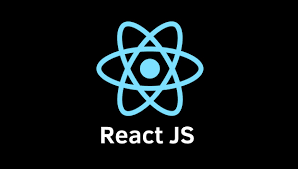Intro
If you’re looking to learn React JS online or searching for the best React JS training Kolkata has to offer, mastering lifecycle methods is a must. These methods are the backbone of every React component, allowing developers to hook into different stages of a component’s life—from creation and updates to destruction. Understanding them can dramatically improve your ability to build optimized, efficient, and bug-free applications.
In this blog post, we’ll take a detailed look at React JS lifecycle methods and explore how you can leverage them in real-world applications. Whether you’re enrolling in a React JS developer course or aiming for a React JS certification Kolkata based program, this guide serves as a vital resource. From class-based lifecycle methods to modern hooks, we’ll explain every aspect clearly and practically. Let’s dive into the architecture of components and unlock the full power of React.
1. State Management with MobX
MobX is a powerful state management library used alongside React to simplify the handling of shared application state. Unlike Redux, MobX uses observables to track state changes, making it ideal for reactive programming. You’ll learn how to set up stores, use @observable and @observer, and integrate MobX with React components seamlessly.
2. Using useState and useEffect Hooks
These two hooks are among the most frequently used in modern React development. useState allows you to add state to functional components, while useEffect lets you handle side effects like data fetching, subscriptions, or manual DOM manipulations.
We cover common use cases, performance tips, and how these hooks relate to traditional lifecycle methods.
3. Managing State with Redux
Redux remains a popular choice for managing complex state in large-scale applications. You’ll explore concepts like actions, reducers, and middleware. Learn how to structure your Redux store and connect components using connect() or hooks like useSelector and useDispatch.
This section is essential for anyone taking a React JS course in Kolkata or preparing for real-world React development.
4. React Js with TypeScript Basics
TypeScript enhances your React applications with static typing, making your code more robust and maintainable. Learn how to define prop and state types, create interfaces, and use generic components in TypeScript.
Ideal for those pursuing a React JS certification Kolkata, this section ensures you’re ready to handle enterprise-level coding standards.
5. Interview Preparation for React Developers
Whether you’re aiming for junior or senior roles, we’ll equip you with the knowledge to crack your React developer interviews. Topics include lifecycle methods, state management, hooks, and best practices.
Mock interview questions and real-world scenarios are also included to boost your confidence.
6. Working with Context API
The Context API allows you to pass data deeply through the component tree without using props drilling. Learn how to create, provide, and consume context, as well as when it’s appropriate to use it instead of Redux or MobX.
A must-know for anyone planning to learn React JS online efficiently.
7. Building Real-Time React Apps
Incorporate WebSockets or Firebase into your projects to create live dashboards, chat applications, or gaming interfaces. You’ll understand the real-time data flow and how React’s virtual DOM handles frequent updates without performance issues.
8. React Js for Mobile Development with React Native
React Native brings the power of React to mobile platforms. Learn how components differ, navigation works, and native APIs are used. This module bridges the gap between web and mobile development for aspiring full-stack developers.
9. Component Lifecycle Methods
This section is the heart of our blog. Component lifecycle methods allow you to manage what happens at each stage of a component’s life. Key methods include:
componentDidMount()– Ideal for initializing data.shouldComponentUpdate()– Used for performance optimization.componentWillUnmount()– Perfect for cleanup tasks like removing event listeners.
We also explain how hooks like useEffect() replicate these lifecycle methods in functional components.
According to Wikipedia, React allows developers to create large web applications that can update and render efficiently in response to data changes.
10. Introduction to React Js Framework
React is an open-source front-end JavaScript library developed by Facebook. It focuses on building reusable components for user interfaces. This foundational module gives you the core understanding needed to master advanced topics like lifecycle methods, hooks, and state management.
Summary
If you’re serious about becoming a top-tier React developer, enrolling in a React JS course in Kolkata is a smart move. Whether you’re just beginning or preparing for a job interview, our content-rich blog and practical examples help you master the essentials.
With a strong foundation in lifecycle methods, hooks, and state management, you’re well on your way to completing a React JS developer course or earning a React JS certification Kolkata. Take the first step and learn React JS online with real-world projects and expert guidance.

